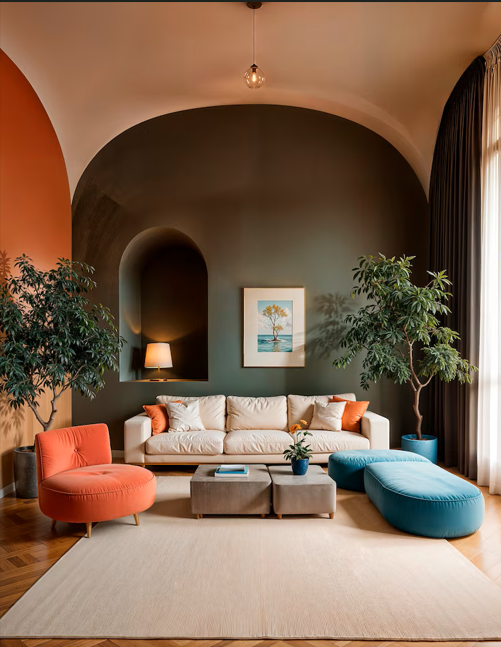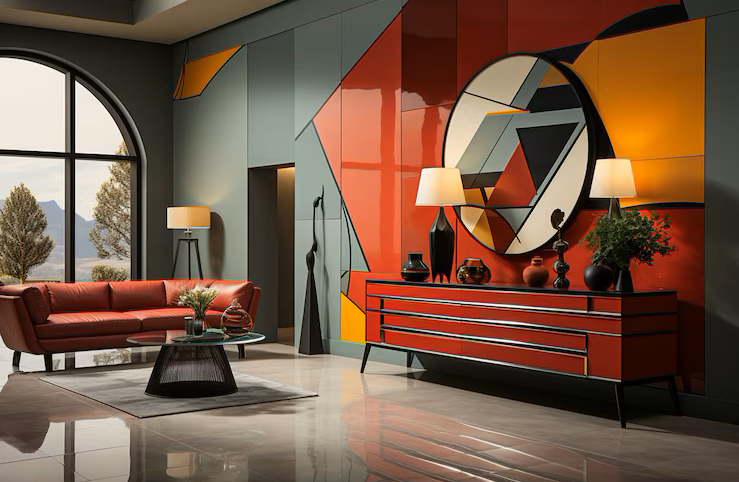Interior Designers in Chennai: Integrating Art into Home Interiors
Integrating art into home interiors has become a defining trend among interior designers in Chennai. The city, known for its rich cultural heritage, has a vibrant and evolving art scene that’s now seamlessly blending with contemporary home designs. Interior designers in Chennai are taking innovative approaches to incorporate art as a pivotal element in creating spaces that reflect the unique personalities of homeowners. Here, we’ll explore how Chennai’s top designers integrate art into home interiors, along with the impact it has on both aesthetics and personal expression.
The Importance of Art in Interior Design
Art elevates a home’s visual appeal and adds layers of texture, color, and emotion that mere furnishings cannot achieve alone. For homeowners in Chennai, integrating art in interiors offers a way to preserve and celebrate local culture while creating contemporary spaces that feel personal and distinctive. Art creates focal points, infuses life into dull spaces, and contributes to an emotional connection with the home.
Art integration also allows interior designers to bring together seemingly contrasting elements in a cohesive way. Whether the chosen style is minimalistic, traditional, or eclectic, art can play an anchoring role, adding harmony to diverse aesthetics. In Chennai, this trend has led to a resurgence in traditional Tanjore paintings, Kalamkari art, and Madras checks-inspired patterns, alongside modern sculptures and international art forms, giving designers immense freedom to create unique interiors.
Selecting Art as a Reflection of Chennai’s Heritage
Many interior designers in Chennai are turning to local artists and artisans to create bespoke pieces that capture the city’s heritage. Art forms like Tanjore paintings, known for their vibrant colors and intricate gold detailing, are a popular choice, especially in traditional or semi-traditional settings. These pieces not only enhance the beauty of the space but also bring a sense of cultural pride and connection to Chennai’s history.
Using Kalamkari art as a design element is another trend on the rise. Traditionally crafted on textiles, Kalamkari art can be adapted as wall hangings or tapestries to add a soft, natural touch to interiors. The rich, earthy tones and storytelling aspect of Kalamkari art create depth and invite conversation. For homeowners who seek a more contemporary vibe, Chennai-based designers are reimagining these traditional art forms, using them in modern color schemes or pairing them with metallic accents.
Fusing Contemporary Art with Traditional Spaces
Chennai’s designers are experts at blending contemporary and traditional art styles. For instance, abstract or modern art can provide a striking contrast to homes with classic architecture or traditional wooden furniture, resulting in a balanced yet visually intriguing space. Paintings with bold brushstrokes or sculptures in unconventional shapes can break the monotony of traditional layouts while preserving a sense of harmony.
Local artists who work with mixed media or abstract themes are becoming increasingly popular in Chennai’s interior design scene. Their works add an avant-garde quality to interiors, appealing to younger homeowners seeking a fresh, artistic vibe. Some designers even work directly with artists to create customized pieces that perfectly suit the home’s color palette and thematic flow, thereby making the space truly unique.
Art in Functional Spaces: Beyond Living Rooms
While art is often highlighted in living rooms, Chennai’s designers are now extending it into other functional areas of the home. Bedrooms, kitchens, bathrooms, and even entryways are adorned with artistic touches that enhance both functionality and aesthetics. In bedrooms, for instance, designers are opting for subtle artwork that promotes relaxation, such as serene landscapes, minimalist line drawings, or abstract art in calming colors.
Kitchens and bathrooms, often overlooked as spaces for art, have started seeing a transformation. Mosaic backsplashes, hand-painted tiles, and sculptural hardware are some ways Chennai’s designers integrate art into these areas. The kitchen becomes more than a workspace, as mosaic tiles or hand-painted designs add texture and color. Similarly, bathrooms are transformed into luxurious, spa-like spaces with the addition of art prints, unique lighting fixtures, and wall-mounted sculptures that create a sense of sophistication.
Sculpture and Three-Dimensional Art
Sculptures and three-dimensional art are also popular elements that Chennai’s interior designers incorporate. These can range from small decorative pieces on tables or shelves to larger, statement sculptures that become the focal point of a room. In Chennai, sculptures are particularly cherished, as they can serve as a bridge between traditional and contemporary design themes.
Bronze and brass sculptures, often inspired by temple architecture, work exceptionally well in Chennai’s homes. Designers often incorporate small statues of Hindu deities or traditional motifs that resonate with the city’s cultural ethos. For those inclined toward contemporary art, sculptures in metal, glass, or ceramic materials are used to create a modern look. These pieces add a tactile quality to the space, engaging the viewer’s senses and making the home feel more dynamic and lived-in.
Color Schemes and Lighting: Accentuating Art
Color and lighting play essential roles in highlighting art. Interior designers in Chennai use these elements strategically to draw attention to art pieces without overwhelming them. Earthy color schemes inspired by Tamil Nadu’s landscapes are often used as backgrounds for traditional art forms, while neutral tones are preferred when showcasing modern or abstract art. This approach creates a serene canvas that lets the art speak for itself.
Lighting is crucial in emphasizing the details of art. Designers often use spotlights, track lighting, or wall-mounted fixtures to illuminate artwork, creating shadows and textures that enhance its visual impact. In living rooms, adjustable lights provide flexibility to change the ambiance, ensuring that the artwork remains the focal point of the space even as lighting conditions change. This thoughtful integration of lighting not only enhances the beauty of the art but also brings warmth and depth to the room.
Personalization and Collaboration with Artists
One of the most exciting aspects of Chennai’s approach to art in interiors is the level of personalization. Interior designers frequently collaborate with artists to create bespoke pieces tailored to the client’s tastes and the home’s overall design. For example, if a homeowner has a particular color scheme in mind, designers work with artists to create customized artwork that complements this palette.
Some homeowners even prefer murals or large-scale wall art. For such clients, interior designers in Chennai collaborate with mural artists to create breathtaking visuals that cover an entire wall, often depicting scenes from Tamil mythology, nature, or abstract compositions. These installations become unique features that set the home apart.
Conclusion
In Chennai, art integration in home interiors has evolved beyond mere decoration; it has become a form of self-expression and a way to celebrate the city’s cultural heritage. By blending traditional art with contemporary design elements, interior designers create spaces that resonate with Chennai’s spirit while offering a fresh, modern appeal. From custom artworks to sculptures, color schemes, and lighting, every detail is thoughtfully curated to craft spaces that are not only beautiful but also deeply meaningful.
For homeowners, this approach means more than a visually appealing home. It represents a lifestyle that values art, culture, and individuality, creating a space where every room tells a story. As the trend of integrating art into home interiors continues to grow, Chennai is leading the way, setting an example of how art can transform a house into a true work of art.





